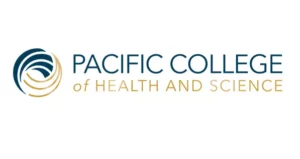Using Western and Eastern medicine in conjunction can often lead to the best health results, but there is one aspect all types of medicine have in common, one over-arching step towards serenity and well being. That common factor is touch. The healing power of touch is not to be underestimated as a powerful source of healing, although it is often overlooked.
Touch itself is an ancient form of healing that permeates various religions and societies, and that is gaining attention today in the form of massage, Reiki, and acupuncture. It is universally acknowledged that touch can simultaneously ease pain, lessen anxiety, promote healing and hope, and help one to take the obstacles in life in stride.
Psychological and Physical Benefits of Touch in Therapy
An instantly lowered heart rate and dropped blood pressure are just two of the physical benefits of touch. Psychologically, touch relaxes the mind as well as the body. Similar to socializing a puppy with a lot of physical activity, making it a point to get massages or touch therapy can help to subconsciously lessen a person’s suspicious or tense nature promote a comfortable and warm demeanor in the patient. Comfort and care can often be best expressed in a silent manner with the use of touch.
Promoting physical contact in your life can be as simple as giving more handshakes or reading to children and grandchildren while sitting next to one another rather than across the room. Giving goodnight kisses to family members, hugs to friends, and even placing a hand on the shoulder of someone in grief can make a difference.
Touch in Oriental Medicine: Reiki and Tui Na
In Oriental medicine, touch is a powerful component of the practice. Reiki is a Japanese technique for stress reduction and relaxation which is administered by “laying on hands,” showcasing the practitioner’s healing touch. The practice of Reiki is similar to acupuncture in that it is based on the idea of an unseen life force (much like one’s qi) that consistently flows through the body. If one’s qi, or life force, is low or blocked in any way, illness ensues (or, the illness can actually be the cause of the problematic qi flow).
In Reiki, much like in traditional Chinese medicine, the higher the level of one’s life force indicates the higher the level of potential happiness. The name “Reiki” is made up of two Japanese words – “rei” which translates to ‘God’s wisdom,’ and “ki,” which means ‘life force energy.’ Patients of Reiki describe it as a glowing radiance flowing through and filling up one’s physical being. It is natural and safe, and is a form of spiritual healing – one in which human touch is integral.
Are you interested in becoming a certified massage therapist?
Visit the links below to explore our massage therapy programs at a campus near you:
The Role of Tui Na and Massage in Healing
Tui na is another Oriental healing practice that centers on touch. Tui na has been in use for over 2,00 years. It is a Chinese hands-on body treatment that involves acupressure (pressure by the hands on the same points on the body used during acupuncture) and strives to bring the body into balance. Tui na focuses on the soft tissues of the body (including muscles and tendons), and along with acupressure, Tui na uses manipulation techniques to realign bone and muscle relationships within the body. And, of course, there is traditional massage work, a consistent success in the calming of the mind, body, and spirit through the use of human touch.
Featured Posts:

